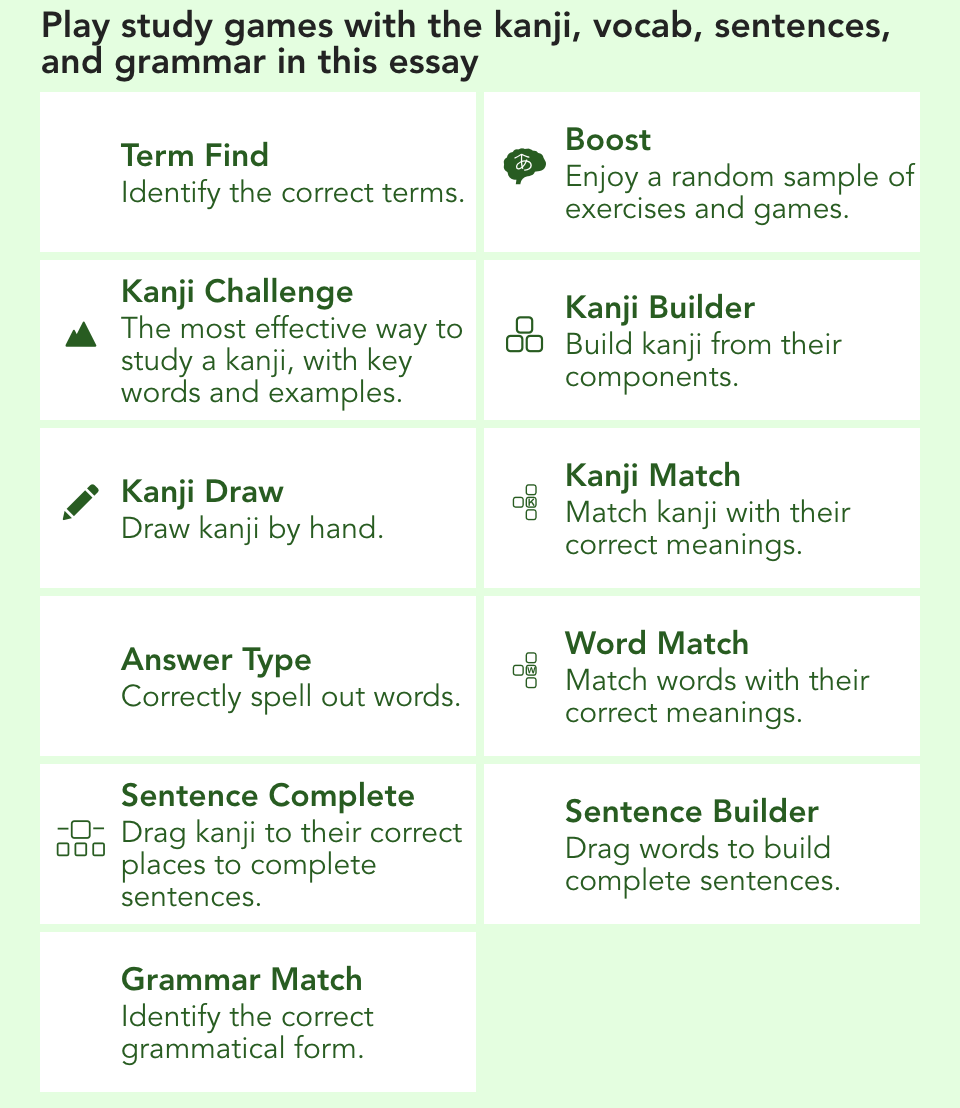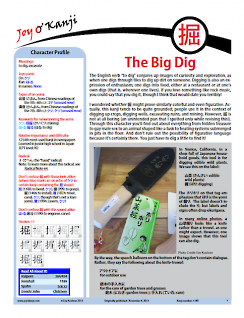掘
to dig, excavate
Kanji 1189
Thank you for visiting this Character Home Page. Below you'll find a synopsis of the essay. If you wish to read the full text, the PDF of the essay is available for purchase to the right.
People use this kanji for digging up crops, excavating ruins, and mining; 掘 is quite grounded. But if you dig a little, you'll soon spot its figurative side. This essay will teach you to say "That old book is a real find" and "Someone rear-ended me." Through this kanji you’ll find out about hidden treasure, an animal shaped like a tusk, and heating systems submerged in pits in the floor.
Revision history:
May 9, 2024: p. 14 caption: Improved some of the writing.
Sept. 10, 2022: p. 16: Added “with a trick” (to cover 策を弄する) to the translation of the sample sentence in the quiz answer.
May 19, 2022: pp. 11-12: Made several changes to the photo caption.
Feb. 24, 2022: p. 12: Changed "Ezo" to “Emishi.”
May 29, 2021:
- p. 2: Updated the Henshall etymology.
- p. 4: Modified the sidebar text.
- p. 16: In the vocab. for the sample sentence, I defined 策を弄する (さくをろうする: to play a trick), instead of defining 策 and 弄する separately.
- p. 19: Added a link to the Kanshudo games.
Nov. 11, 2015: On pages 1, 9, and 15, I've fixed places where 堀 mistakenly appeared instead of 掘.
May 8, 2015: Made several changes:
- p. 3: For the third definition of 芋掘り, I changed "looking down on rural people" (which sounded like the act of looking down on someone) to "derogatory term for rural people."
- pp. 4-5, 11, 12, 14: For several keywords I changed the first part of the breakdown from "digging" to "to dig." That is, in compound verbs such as 掘り起こす, the 掘り is not a noun but rather the pre-masu form of the verb 掘る, so "to dig" is more accurate.
Nov. 8, 2013: Originally published.



Comments